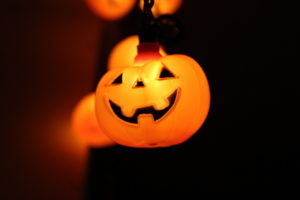 Countries around the world celebrate Halloween, but no other country can match its popularity in North America and Canada. Before it turned into a celebration of sweets and costumes, ancient people with a different set of belief celebrated it.
Countries around the world celebrate Halloween, but no other country can match its popularity in North America and Canada. Before it turned into a celebration of sweets and costumes, ancient people with a different set of belief celebrated it.
From Samhain to Halloween
Halloween is believed to have originated from the Celtic festival of Samhain, pronounced sow-in. The Celts lived in what are now Ireland, United Kingdom, and Northern France. People celebrated the Samhain festival on the night of October 31. During this night, the Celts thought that their priests could predict the future.
During the celebration, people wore costumes of animals' heads and skins. They tried to tell each other’s fortunes around huge sacred bonfires. Pope Gregory III designated November 1 as the All Saints’ Day. The night before became the Halloween.
Modern American Halloween
In America, “trick-or-treating” is one of the most recognized activities for children during Halloween. The post-war baby boom increased its popularity among children across the country. Children, as well as the adults who accompany them, dress up to celebrate the night.
Halloween celebration is not limited on the eve of October 31. In Minnesota alone, people visit Halloween attractions, tell ghost stories, and organize haunted hayrides pumpkin fest, Halloween marathon, and other activities. Costume parties are also popular. In fact, a huge number of parties are held during this holiday. People decorate their homes and offices with skeletons, jack-o-lanterns, ghosts, and other materials that go with the Halloween spirit.
While it is true that Halloween is second only to Christmas in total revenue dollars for retailers, it also brings people together. In this age when most people interact mainly through social media, holidays like Halloween give people a reason to look up from their smartphones, spend time with their families and friends, go on an adventure, and celebrate life and traditions.

